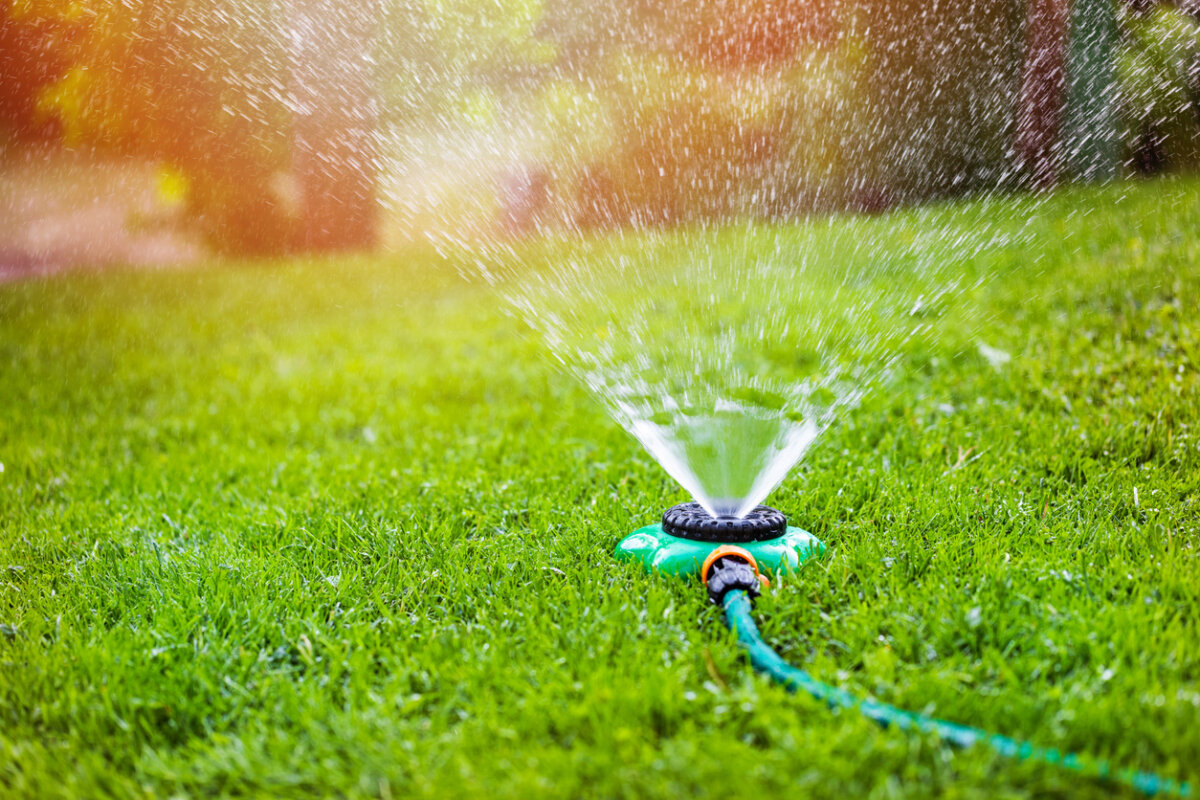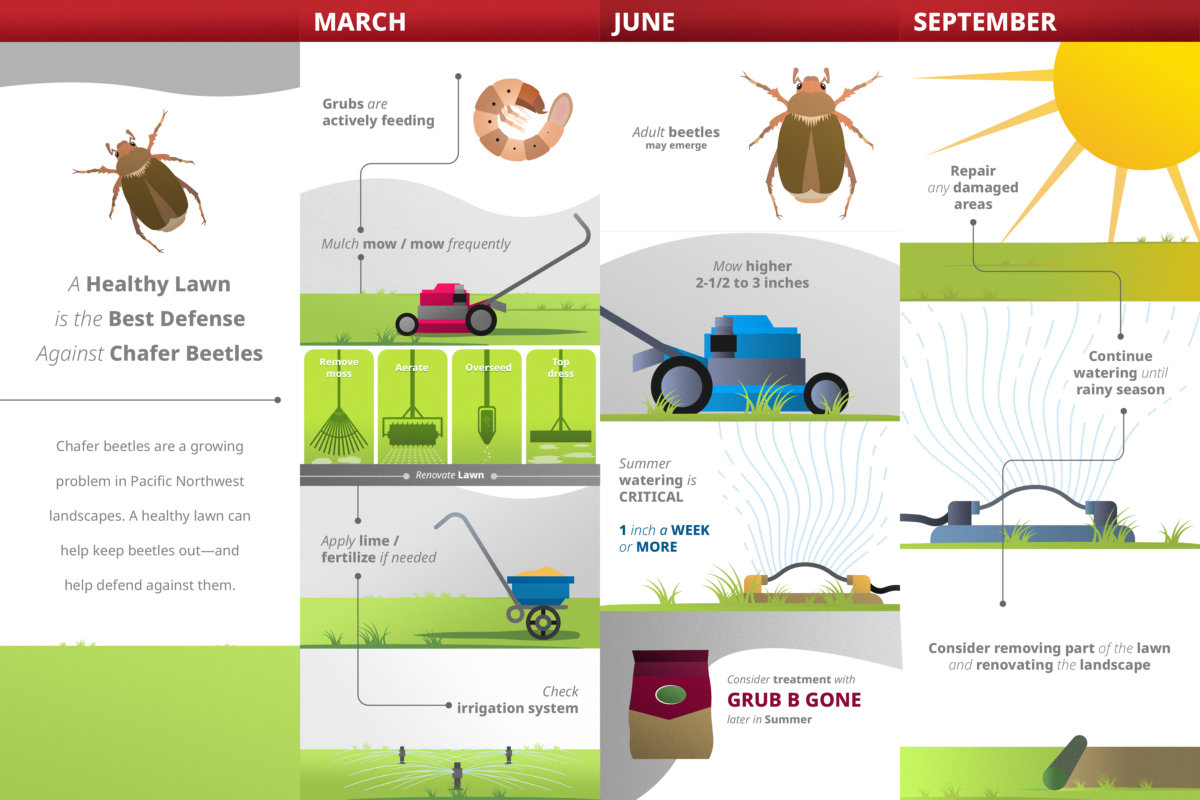
Take steps now to manage chafer beetles by building lawn health.
If your lawn has been damaged by chafer beetles this summer, September is the time to take steps to repair, restore and renovate your lawn.
A healthy lawn is the best defense against chafer beetles. Here are tips on what to do in September to improve your lawn’s health.
What are chafer beetles and why should I care?
The European chafer beetle is a serious lawn pest that is spreading and causing lots of problems throughout the Seattle area. So far, the heaviest concentrations are in the South End, such as Rainier Valley, West Seattle and Burien.
The chafer beetle “could pose the biggest threat in nearly half a century to turf grass lawns and athletic fields in the Pacific Northwest,” according to The Seattle Times.
Many birds, raccoons and other animals find the grubs to be a tasty treat. People describe lawns that crows have ripped to shreds while looking for beetle larvae.
Chafer beetles appear to be more of a problem on lawns that are dry, thin and unhealthy. If your lawn has suffered from lack of water, or if you let your lawn go dormant, it provides a prime environment for chafer beetles (as well as moss and weeds) to invade. Any damage will be more apparent at the end of summer.
Managing chafer beetles: what you can do now
Repair any damaged areas.
Aeration and overseeding are a good way to address lawn damage. Aeration allows more air, water and nutrients to reach the lawn roots. Overseeding fills in damaged and thin areas in the lawn, and topdressing with a thin layer of compost and sand protects the seed and builds up the soil.
Read more about the benefits of aeration and overseeding for lawn health. And find out more about our natural lawn care services. We are now planning our fall aeration and overseeding schedule.
You may also want to fertilize and/or apply lime. If you are a lawn care client, we will apply fertilizer or lime as needed. Here is a video about how to fertilize your lawn and a blog post about what lime does for your lawn.
Continue watering until rainy season.
If you have let your lawn go dormant, don’t wait any longer to water. And remember to water deeply so water penetrates the entire root zone. Here is a short video on how to water a lawn.
As our summers have gotten hotter and drier for longer periods of time, we don’t recommend letting lawns go dormant. It is challenging to bring a lawn back to lush health if it has been allowed to die back in the summer.
Consider removing part of the lawn and renovating the landscape.
You could remove the damaged part of the lawn and reseed or resod it. Here is a blog post from Swansons Nursery about lawn renovation.
You may want to consider turning more of your landscape into garden beds, with trees, shrubs and perennials. It will provide more visual and seasonal interest, and with proper plant choices, it may be easier to maintain than a lawn. Find out more about our approach to landscape design and installation.
Here is our complete checklist on how to manage chafer beetles, and here are links to blog posts with more details for managing chafer beetles in March and in June.


